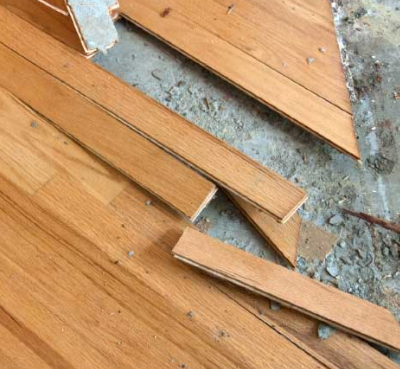 Checking Moisture
Checking Moisture Before they pour a concrete slab, builders usually lay down a vapor barrier. Concrete appears to wick water easily, and much of the moisture is kept back by the barrier. Try cutting a polyethylene plastic 12-inch-by-12-inch sheet and taping it to the slab. Make sure that the edges are covered completely with duct tape. For about 24 hours, leave the plastic in place. The plastic sheet should still be clear after that time. No water droplets or clouds that suggest the presence of moisture should be seen. You can add wood over the concrete slab, if the plastic is clear.
Barrier Moisture
You will need additional protection from water vapor before laying a wood floor, despite a good moisture check and the existence of an underground moisture barrier. One way of providing the moisture barrier is sheets of 6-mil thick polyethylene plastic, overlapped with taped seams. Paint the slab with a moisture sealant for a second choice. Home centers store a choice of brands of sealers as well as 6-mil plastic rolls.
Subfloor board
One installation technique is installing a subfloor over the concrete slab. Over the moisture barrier, create a subfloor with sheets of 3/4-inch pressure-treated plywood. Directly on top of the pressure-treated plywood, nail wood flooring planks. You may also lay down lengths over the moisture barrier of pressure-treated, 2-inch-by-4-inch studs. These studs, on top of which you nail sheets of 3/4-inch plywood, work similarly to floor joists. The studs hold the wood flooring planks farther away from the slab and reduce the quantity of wood that remains in immediate, continuous contact with concrete.
Adhesive
A second strategy for installation is to glue wood flooring planks to the slab. In this scenario, with a moisture sealant, paint a waterproof membrane over the slab, then add a specially prepared adhesive. At home centers and flooring stores, the glue is available. This adhesive dries quickly, which means you have to work quickly. With this strategy, you do not need to be nailed. Using a rubber mallet to tap the wood planks in place, which sets them into the adhesive and forces the tongue of one plank into the groove of another.

